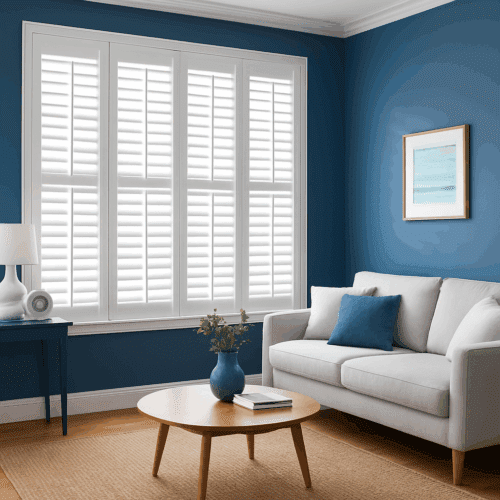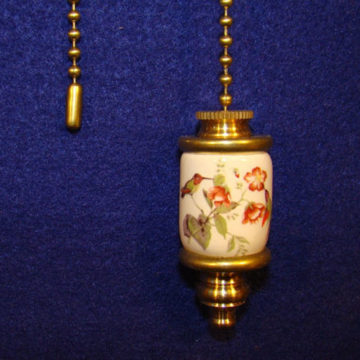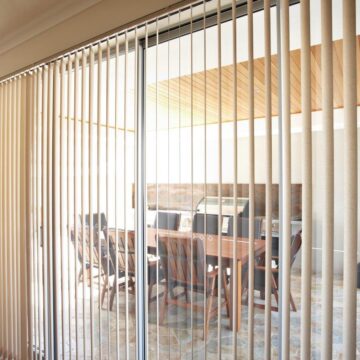Choosing the right plantation shutter can feel like juggling climate, privacy and budget at once. For most Australian homes, the sweet-spot is hardwood or PVC inside and aluminium outside, paired with full-height panels for a clean look or café-style where you need street-level privacy. Full-height for a sleek lounge, tier-on-tier for bay windows, bi-folds to open the patio—each choice changes how the space lives and feels.
Plantation shutters—interior window shutters with wide, tilting louvres—let you fine-tune light and insulation while adding a crisp architectural line to the frame. Some suppliers now call them simply “interior shutters”, yet the original name remains common across Australia. To help you pick the perfect match, this guide compares twelve popular options: six materials and six styles, measured against durability, moisture resistance, insulation, aesthetics and cost. Whether you’re a homeowner, renovator or builder gathering quotes, you’ll finish with a clear shortlist before the tape measure comes out.
1. Hardwood Timber Shutters (Basswood, Poplar, Paulownia)
When people picture classic plantation shutter types, they’re usually thinking of solid timber panels. Basswood, Poplar and the ultra-light Paulownia headline the category because they mill cleanly, hold joinery screws and accept stain or paint without fuss.
Key Characteristics & How They’re Made
After kiln-drying to stabilise moisture, planks are machined into stiles, rails and louvres. Mortise-and-tenon joints keep the frame square, while a tensioned tilt rod links the blades. The visible wood grain gives every panel a one-off warmth factory finishes can’t replicate.
Pros, Cons & Cost Range
- Pros: superb thermal insulation, refinishable surface, sustainably sourced options.
- Cons: pricier, vulnerable to warping in steamy rooms, needs resealing every few years.
- Budget: roughly AU $350–$500 per m² installed.
Ideal Rooms & Styling Tips
Perfect for living rooms, master suites and heritage renos. Match stained timber shutters to hardwood floors, or paint them crisp white with 89 mm blades for a contemporary Hamptons edge. Skip bathrooms unless ventilation is excellent.
2. Western Red Cedar Shutters
Cedar sits in a league of its own among plantation shutter types—lighter than most hardwoods yet remarkably stable, it gives off a soft aroma and that unmistakable reddish hue that architects rave about.
Unique Selling Points of Cedar
- Natural aromatic oils deter termites and mildew
- Fine, straight grain sands silky smooth and holds clear coats beautifully
- Weighs roughly 20 % less than Basswood, easing strain on hinges and large panels
Performance & Maintenance
Cedar handles coastal humidity well, but a UV-blocking sealant is still essential every few years to stop greying. Expect better dimensional stability than generic hardwood, though the upfront cost creeps higher.
Best Uses & Design Ideas
Use cedar shutters in beach houses, spa-like bathrooms or statement gable windows. Team the warm timber with neutral linen curtains or white weatherboard walls for an effortless “holiday at home” vibe.
3. Composite / MDF (Engineered Wood) Shutters
Composite (MDF) shutters mimic timber grain without the price tag, making them a favourite in first-time renovations and investment properties.
What “Composite” Really Means
A medium-density fibreboard core is sealed inside a tough polymer skin or multiple paint layers. Precision sanding leaves a perfectly smooth, knot-free surface that looks like painted wood from a distance.
Pros, Cons & Budget Impact
Pros
- Wallet-friendly (≈ AU$280 – $350 m²)
- Uniform colour, no sap bleed
- Respectable insulation values
Cons
- Heavy panels strain hinges
- Coating breach leads to swelling
- Colour range mostly whites
Placement & Installation Tips
Best on large fixed windows; use an L-frame to square everything quickly. Avoid wet zones such as bathrooms and laundries where splashes are likely.
4. PVC / Solid Vinyl Shutters
PVC — or solid vinyl — shutters are the ‘wipe-and-go’ workhorse of plantation shutter types, loved by investors and busy families who want zero-drama maintenance at a sharp price.
Construction & Finish Options
Panels are extruded as hollow or solid PVC; wider louvres get an internal aluminium rod for strength. Factory-sprayed UV paint—usually crisp white—creates a smooth, non-porous skin.
Durability, Insulation & Environmental Factors
Completely waterproof, termite-proof and easy to wipe clean, PVC laughs at bathroom steam and coastal salt. Insulation lags timber slightly but beats metal. Environmental critics note the plastic content, so choose lead-free profiles from reputable brands.
Where They Shine
Ideal for wet rooms, rentals and family kitchens. Use a Z-frame to mask uneven tiles and stop light bleed around the shutter edge.
5. Aluminium Shutters (Indoor & Outdoor)
Aluminium shutters are the heavy-duty member of the plantation family, purpose-built to tame harsh Aussie sun, salt spray and strong winds without swelling, cracking or fading.
Material Profile
Extruded marine-grade aluminium sections are powder-coated in over 100 colours; stainless fasteners and nylon pivot pins resist corrosion, while optional keyed locks turn each panel into security screening.
Strengths, Weaknesses & Approx. Cost
- Pros: hurricane-level strength, spans up to 1200 mm per panel, zero maintenance beyond an occasional hose-down.
- Cons: metallic look can feel industrial indoors, conducts heat on west-facing glass, premium pricing around AU $500–$600 m² installed.
Best Applications & Configuration Ideas
Use hinged panels inside high-rise apartments, or fit track-mounted bi-folds across alfresco kitchens; mix fixed blades for privacy walls with operable blades where airflow matters.
6. Faux-Wood / Vinyl-Wrapped Shutters
If you like the crisp paint finish of PVC but still want a hint of timber authenticity, vinyl-wrapped shutters bridge the gap without crushing the budget.
How They Differ from Solid Vinyl
- Engineered wood or LVL core is wrapped in a rigid vinyl skin that’s heat-bonded, so no separate paint layer to chip.
- Up to 30 % lighter than solid PVC while offering better screw-holding for hinges.
Performance Snapshot
- Handles kitchen splashes and mild humidity; not fully waterproof like PVC.
- Mid-range price bracket; colour palette leans to whites and pale neutrals.
- Cannot be sanded or re-stained—damage means panel replacement.
When to Choose Faux-Wood
Great for busy kitchens or family rooms needing “painted-timber” vibes without the upkeep. Limit panel width to 850 mm to keep gravity at bay.
7. Full-Height Plantation Shutters (Style)
Full-height panels are the simplest and most popular shutter style, running from sill to head in one clean sweep.
Defining Features
- Single panel per side; mid-rail optional for strength; shared tilt rod or split tilt.
Advantages, Drawbacks & Cost Implications
- Pros: sleek look, best light block, fewer frames keep cost down (often the cheapest style).
- Cons: top and bottom louvres move together unless split tilt specified, tricky on very tall windows.
Design Use Cases
Perfect for modern living areas and sash windows; choose 76–89 mm louvres for a Hamptons vibe.
8. Tier-on-Tier Shutters (Double-Hung)
Tier-on-tier shutters stack two operable sections, letting you open the top for daylight while keeping the bottom private.
Style Essentials
Upper and lower panels share one frame but have separate hinges and tilt rods, so each tier moves independently.
Pros, Cons & Installation Notes
- Pros: max control of light and views
- Cons: extra frame lines, ≈ 15 % dearer than full-height
- Install: choose a sturdy Z-frame; watch hinge clearance in shallow recesses
Perfect Situations & Styling Hints
Ideal for street-front bedrooms and ornate bay windows; paint frames to match architraves to downplay the extra joinery.
9. Café-Style Shutters
Borrowed from Parisian shopfronts, café-style plantation shutter types cover only the lower half of a window, preserving street-level privacy while letting sunshine pour through the bare glass above.
Distinct Characteristics
- Panels stop at sill height; exposed upper pane floods room with light.
Pros, Cons & Common Mistakes
- Pros: cheaper, keeps prying eyes out yet daylight in.
- Cons: minimal insulation; mis-measuring sill height ruins symmetry.
Ideal Rooms & Complementary Treatments
- Dining rooms and street-front terraces; pair with sheer curtains or a roman blind for nighttime cover.
10. Bi-Fold & Track-Mounted Shutters
Bi-fold shutters turn a wall of glass into an open passage, folding away neatly along a slim overhead track to let the breeze roll straight through.
How the Mechanism Works
Runs of two to eight panels hinge together and glide on nylon rollers within a concealed aluminium headrail; bottom guide pins prevent swing.
Strengths, Limitations & Price Clues
Pros: clears almost the entire opening, ideal for indoor-outdoor flow. Cons: more hardware, visible tracks, costs roughly AU $450–$600 m².
Best Applications & Style Tips
Use on patio doors, verandas or as room dividers; spec 114 mm blades for unobstructed views.
11. Sliding / Bypass Plantation Shutters
Sliding, or bypass, plantation shutters park one panel neatly behind another on parallel tracks, giving you fingertip control without a swinging leaf intruding on furniture or walk-ways.
System Overview
- Panels glide on aluminium head and sill tracks, each fitted with nylon rollers for a quiet, low-friction slide
- No hinges are required, so recess depth only needs to accommodate panel thickness plus the track set
Performance & Practical Considerations
- Pros: ideal where furniture or tight corridors prevent a hinge swing; smooth, child-friendly operation
- Cons: one panel always overlaps another, limiting the fully open area; marginally higher material cost than hinged sets
- Upgrade tip: specify soft-close rollers to curb rattles in windy Adelaide afternoons
Ideal Situations & Design Ideas
Great across sliding glass doors, wardrobes or apartment balconies. Match track colour to floorboards for a seamless look, and choose 89 mm louvres to balance outside views with privacy.
12. Shaped & Custom Bay Window Shutters
Unusual arches, triangles or deep bays don’t exclude plantation shutters. Custom CNC-routed frames hug every contour, giving you the same blade control on windows curtains simply can’t tame.
What Counts as “Shaped”
- Arches, circles, triangles, hexagons, angled gables and multi-panel bays all qualify
- Each facet is templated, then milled individually before final assembly
Benefits, Drawbacks & Budgeting
- Pros: celebrates architecture, removes need for awkward curtain rods
- Cons: 8–12-week lead time and premium labour
- Keep weight down with Paulownia or PVC; budget roughly AU $550–$700 m² installed
Design Inspiration & Measuring Advice
Think Federation bay sashes, gable ends or stairwell portholes. Measure every facet separately; a forgiving Z-frame hides uneven plaster, while an L-frame keeps slim sightlines in perfectly square bays.
Choosing the Right Plantation Shutter for Your Home
With twelve plantation shutter types now fresh in your mind, boil the decision down to three sliding scales:
durability vs. moisture exposure, style vs. light control, and budget vs. long-term value. A full-height Basswood panel may look stunning, but if the window sits over a steamy spa bath, PVC or aluminium will live longer and cost less in maintenance. Conversely, the cheapest café-style option might under-deliver on insulation in a south-facing lounge.
Use this quick checklist to land on a material–style combo that fits:
- List every room and its moisture level.
- Note how much light you want to block or invite.
- Measure clear opening size; flag doors wider than 1.5 m for bi-fold or sliding tracks.
- Consider existing décor—timber tones or crisp whites?
- Set a realistic per-square-metre budget.
- Add resale value as a tie-breaker.
Still unsure? Homeowners across Adelaide can book a free in-home measure and quote with Classic Roller Shutters Adelaide and let our experts match the perfect shutters to your space.





